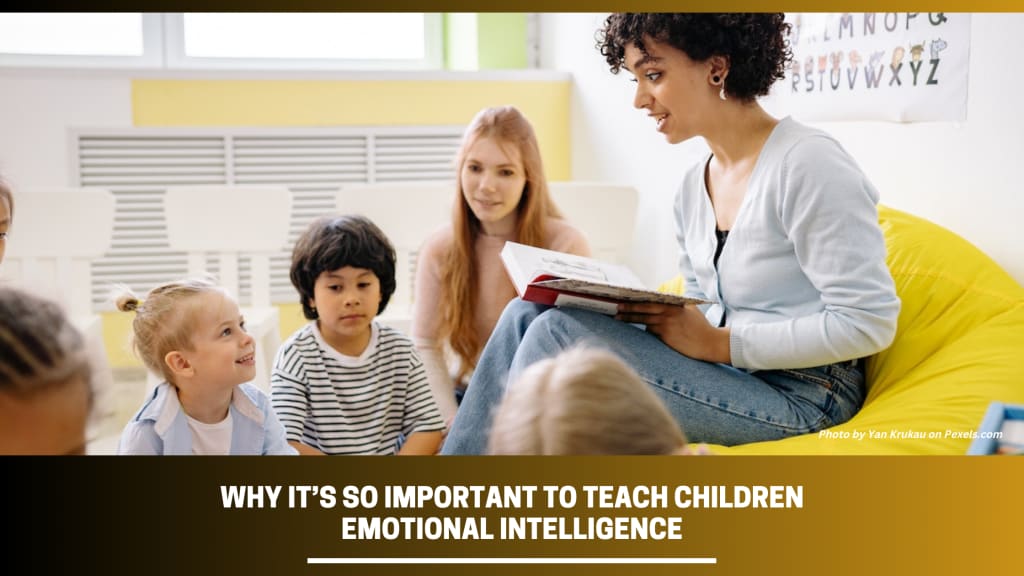Why It’s So Important to Teach Children Emotional Intelligence
Here are some suggestions for helping children develop emotional intelligence.

We usually think of emotional intelligence as a skill that adults require, but emotional intelligence begins to develop in childhood with the help of assistive technology for preschoolers. Nurturing emotional intelligence in children is critical for their future success in interpersonal and social relationships. Parents, carers, and teachers must find effective ways to assist children in developing emotional intelligence in order to prepare them for a successful future.
The concept of emotional intelligence is not new, but it has only recently gained popularity, and many parents are wondering how to increase their child's emotional intelligence or emotional quotient (EQ). Here are some suggestions for helping children develop emotional intelligence.
Recognizing Emotional Intelligence in Children
Because a child's emotional intelligence varies with age, it's critical to understand how to spot it. Children with emotional intelligence can recognise and understand not only their own emotions, but also the emotions of others. Emotional intelligence, in other words, is a combination of self-awareness and empathy. An emotionally intelligent person can read other people's body language, facial expressions, and verbal cues and respond with empathy.
Of course, very young children are self-centered to some extent because their brains are still developing and they are naturally focused on their own physical needs. They also don't always understand why they feel the way they do; babies don't consciously understand why they cry. As children grow, they learn that others are different from them and have different needs, and their capacity for altruism and empathy grows. Learning to share can be a critical stage in this process. Similarly, when children learn to identify their feelings, they can achieve a surprising level of self-awareness and introspection.
There is no single way to assess a child's emotional intelligence, but there are a few easily discernible indicators. As a child's emotional intelligence grows, he or she becomes more able to describe and express their emotions verbally. A child's emotional intelligence grows as they learn how their emotions affect the people around them and the outcome of situations.
The following are some common examples of emotional intelligence in children:
Expressing themselves to others: They are able to say things like, “I’m really mad because he took my toy!” or “I feel bad. I don’t know anyone in the class.”
Listening to others: Instead of drifting off into an unrelated topic when their peers or parents tell them a story, they engage with the storyteller through active listening and questions.
Self-regulation: A great example of this is when a child becomes frustrated or angry and is able to take a step back to recognise and express their emotion constructively rather than lashing out. This can be extremely difficult for many adults, let alone children!
How to Teach Emotional Intelligence to Children
It's easy to see why emotional intelligence is so important—the ability to express one's feelings constructively and self-regulate is essential in almost every aspect of life, from professional to personal. Furthermore, emotionally intelligent children are better prepared to deal with life's challenges, such as interpersonal conflicts, stress, disappointment, and high-pressure social situations. Emotional intelligence research confirms its significance. One study on emotional intelligence, for example, found that children with higher emotional intelligence have better grades, stay in school longer, and make healthier choices overall. Other studies have found that emotional intelligence is essential for success in four areas: relationships, effectiveness, health, and quality of life.
Emotional intelligence is taught to children by teaching them to recognise their feelings, express them constructively, and identify what is causing these feelings with the help of preschool interactive activities. The five pillars of emotional intelligence that children can learn include:
- Self-Awareness: The ability to recognize our emotions.
- Self-Regulation: The ability to control our reactions to our emotions.
- Internal Motivation: The ability to think about and identify what’s causing us to feel the way we do.
- Empathy: The ability to understand the emotions of other people.
- Social Skills: Using emotional intelligence to build strong social relationships.
To some extent, these five principles can be taught at almost any age. Preschool teachers and parents, for example, can begin by encouraging toddlers and other young children to use words to express their emotions. This can help children develop the habit of recognising their emotions on a regular basis and is an important part of "naming it to tame it." In other words, naming an emotion gives the child control over it. Parents and carers can also talk openly about their own emotions, even if they are afraid, sad, or angry. Empathy is also learned through example; for example, children learn empathy when their carers show concern and try to comfort them after they fall on the playground.
The Long-Term View of Emotional Intelligence
One of our greatest challenges as parents is providing our children with the skills they need to navigate life's challenges. While academics are important, emotional intelligence is also essential for life success. Parents and carers must do everything possible to foster an environment in which children can become the best versions of themselves. High emotional intelligence continues to be a reliable predictor of future success, so parents and carers should do everything they can to help their children develop this capacity.
About the Creator
Amit Kumar
Full-time thinker & part-time writer...






Comments
There are no comments for this story
Be the first to respond and start the conversation.